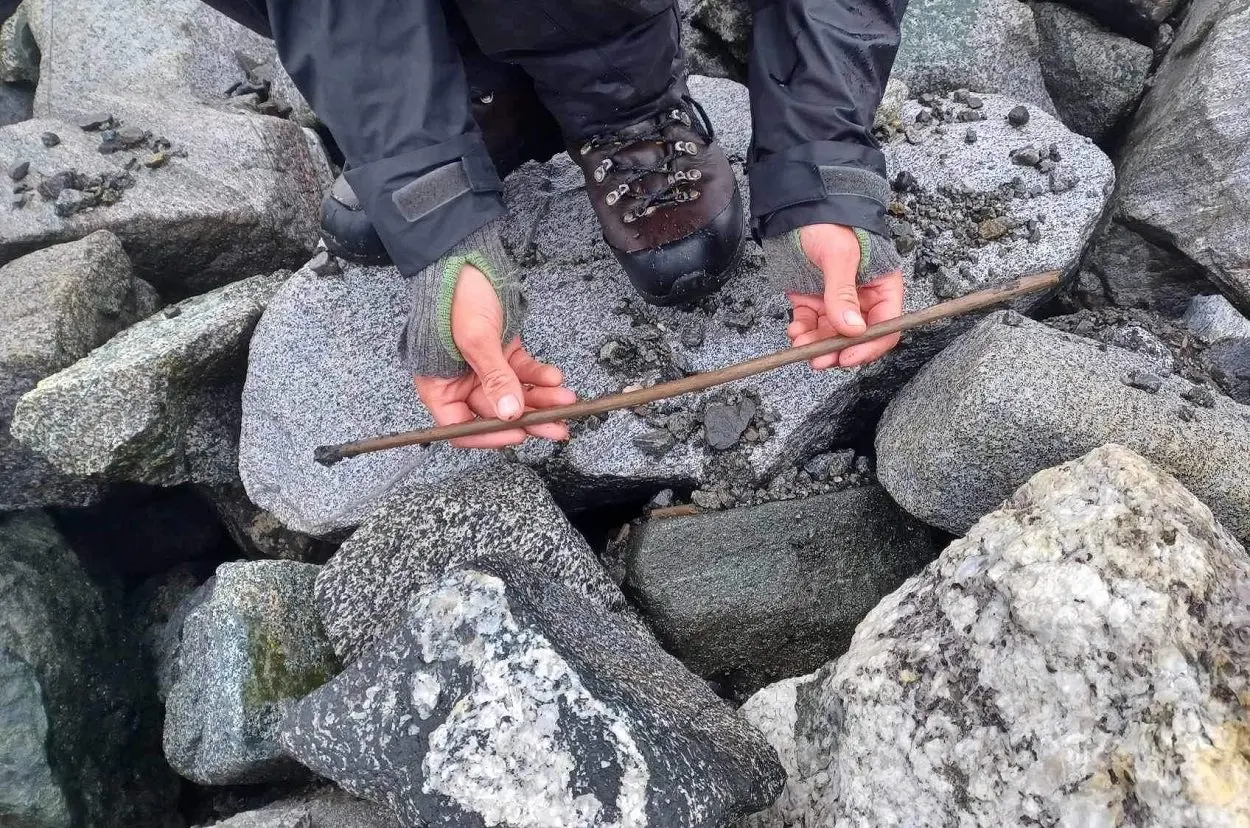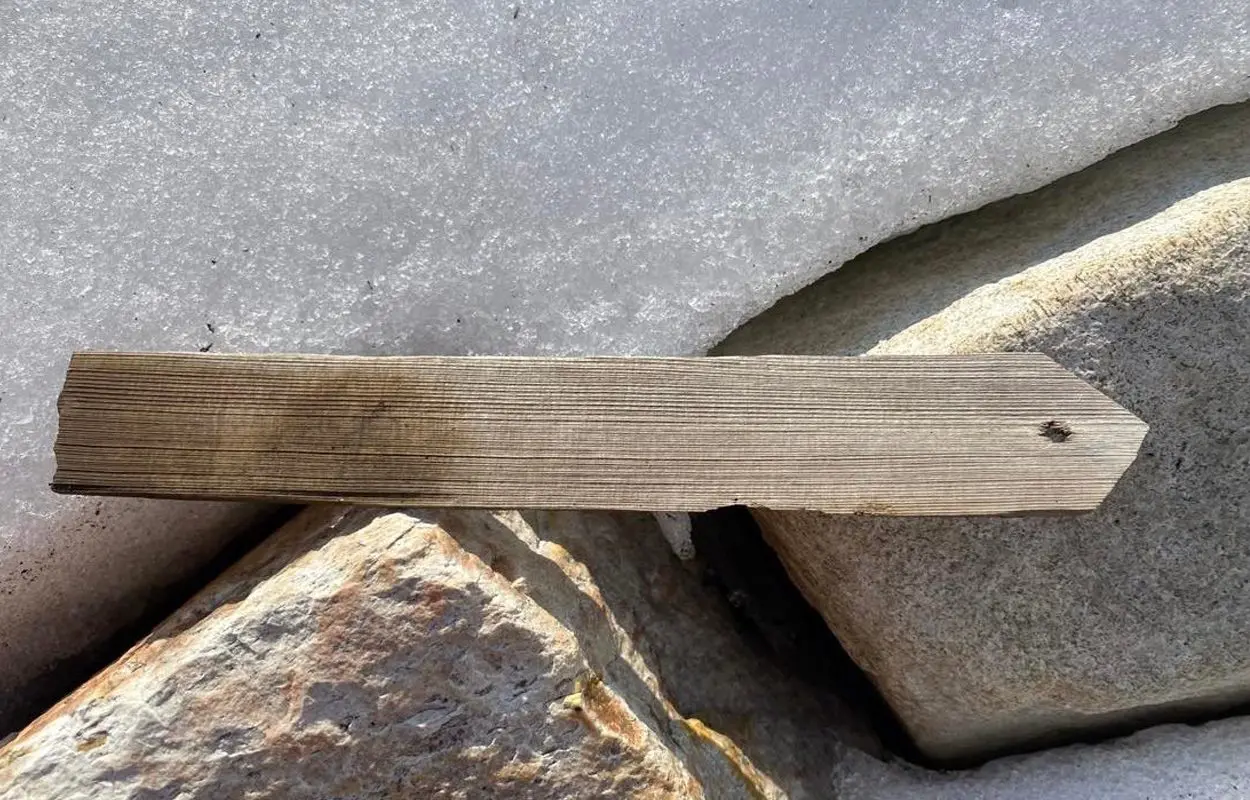Archaeologists from the Secrets Of The Ice project are uncovering archaeological treasures left by melting glaciers in the mountains of Norway.
The team have found remnants of reindeer hunts dating back 1,500 years in a survey of melting glaciers in the Breheimen National Park.
The archaeologists discovered a perfectly preserved flag made from radially split pine wood in the melting Spørteggbreen glacier, a 28-square-kilometre (11 sq mi) glacier located between the Jostedalsbreen and Harbardsbreen glaciers.
Ancient hunters attached the flag to scaring sticks placed in lines to direct herds of reindeer to predetermined locations. According to the researchers: “Reindeer are very sensitive animals and tend to shy away from human-like silhouettes or moving objects.” The sticks would scare the reindeer, directing them toward archers lying in wait.
Scaring sticks are known from Oppland and Møre and Romsdal counties in Norway. The Oppland finds have been dated to the Iron Age, with the majority of scaring sticks dated to the Migration Period (AD 400-570).

The team also discovered an arrow at a site in Lauvhøe, which was found broken at both ends in a deposit of glacial silt. Most finds from the melting glaciers generally date from the Iron Age, however, the arrow is the first prehistoric find which dates from around 4,000-years-ago.
According to the researchers: “Length of exposure plays a major role in the preservation of artefacts found at an ice patch. This factor often correlates with the distance of the find spot from present day ice – the further away from the ice, the poorer the preservation. This may appear self-evident, but sometimes local conditions around the find spot may also be beneficial to artefact survival. This could, for example, be a large boulder that collects extra snow, and provides shade.”
“The prospect of making new discoveries from the retreating ice in the coming years is exiting and sad at the same time. As glacial archaeoogists, there is little we can do to stop global warming and ice melt. Our priority is to record the history of a melting world. The task is to rescue the artefacts, preserve them for the future and try to unlock the stories they can tell about the past.”
Header Image Credit : SECRETS OF THE ICE





